Ace Vaptsarov and the Guitar Arias Orchestra
(Conductor: Anthony Sabatino)
First Church Boston, The Sanctuary
December 2, 2016
Berklee student, guitarist Ace Vaptsarov, who I first encountered when he joined Balkansky onstage for a few songs a year ago, was the featured artist of the evening. He was the artistic director and soloist, supported by an orchestra featuring musicians from Berklee College of Music, Boston Conservatory and Longy School of Music, conducted by Anthony Sabatino, and led by concertmaster Seoyeon Im. Assistant conductor Sahil Jindal also conducted three of the performance’s eleven numbers.
The performance was a unique take on opera, with the evening containing arias from such operas as Carmen, Magic Flute, Faust, Tosca, Il Trovatore, and La Traviata, placing a different spin on several of the most famous operas with the infusion of an electric guitar part accompanying a symphony comprised of some of Boston’s most talented musicians.
Both seventh-semester Berklee student Vaptsarov and the graduating Sabatino are quite accomplished, having achieved positions of distinction and received accomplishments and accolades while still students at Berklee. Indeed, this concert event, and the talented orchestra with which they’re working, are more than just another feather in their caps; rather, this is a terrific musical presentation that’s a welcome fusion of rock and jazz guitar with orchestra, an interesting take on old favorites for adventurous music fans.
I was excited for this event, curious to hear how the guitar and orchestra melded together… and the performers kept the audience in suspense through the first piece, an arrangement of Schubert’s “Ave Maria” on which Ace’s guitar was complemented only by piano as the orchestra sat silent.
Soon enough, it became apparent, as the full orchestra participated throughout the rest of the program. It took a few numbers before the jitters settled and the comfort level peaked. In fact, I’m uncertain if it was the performers or the audience or both that finally settled into a groove, but by the end of the short, hour-long program, I think everyone was disappointed the performance had to end.
Interestingly, on some numbers Ace used effects that caused the guitar to sound like its own one-man bowed string section, while a more typical electric guitar sound was used elsewhere, as appropriate. In “Ave Maria,” for instance, there was a guitar echo effect that created a hollow, plucking sound, almost like a combination of harpsichord and violin.
After the sparsely orchestrated first number, of course, for the second piece, the “Anvil Chorus” from Verdi’s Il Trovatore, the full orchestra joined in, and in this case Ace’s power guitar melded well with the strings, giving the whole performance an electric edge.
Throughout, the warm power of the strings were fully the electric guitar’s equal, as it quickly became clear the orchestra featured some of the best strings in Boston. The woodwinds and horns each had their moments, as well; particularly, I noted the winds’ significant role in “Lucevan le Stelle” from Puccini’s Tosca. And, of course, the percussion can’t be overlooked, particularly in opera pieces, where they’re often called upon to add the forces of power to the most dramatic moments.
In addition to the opening number, which was an engaging way to begin the event, there were four others that particularly stood out for me. “Toreador” from Carmen, for example, in which the full orchestra sound complemented the guitar, which played the “toreador” part. The exchange between guitar and orchestra created a fun dynamic that caused this piece to stand out.
Another aria from Carmen, “Habanera,” also charmed. In this case, while the guitar sounded like a bowed string section, the portions during which the music moved notably between the string section and the guitar were particularly entertaining.
“La Donna e Mobile” from Verdi’s Rigoletto was also noteworthy. It was a number crisply-performed by both Ace and the orchestra — short but exceedingly fun.
And “Der Holle Rache,” the Queen of the Night aria from Mozart’s Magic Flute, was an exceptional penultimate song. Per Ace’s remarks the aria that initially sparked his idea for this evening, this was a dynamic number, as the soft to loud variances for both orchestra and guitar complemented each other quite well.
“Brindisi” from Verdi’s La Traviata ended the evening, again showcasing a fun back-and-forth between guitar and strings, closing the program on a high note, leaving the audience wanting more.
In the end, this was a fun performance, a unique evening well worth seeing and hearing, a night that will be long-remembered by the performers and the audience. Thanks to Ace Vaptsarov, the conductors Anthony Sabatino and Sahil Jindal, concertmaster Seoyeon Im, and the talented Guitar Arias Orchestra for a sensational, one-of-a-kind performance. It will be worth keeping an eye on all of the key contributors to this event to see what they’re up to next, as I expect some more unique, enjoyable, culturally forward-looking evenings are in their futures.

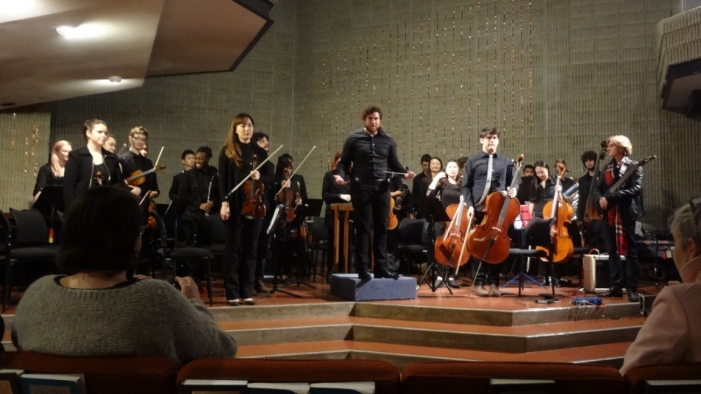
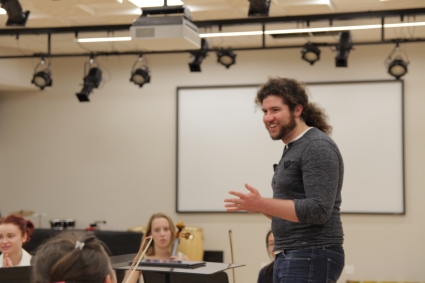

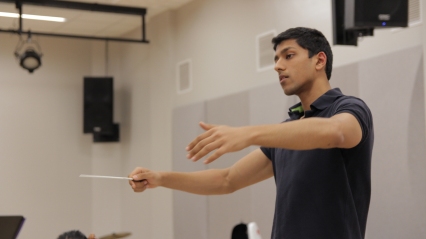

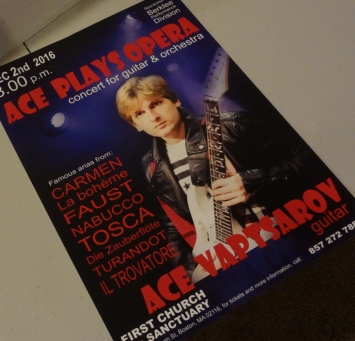

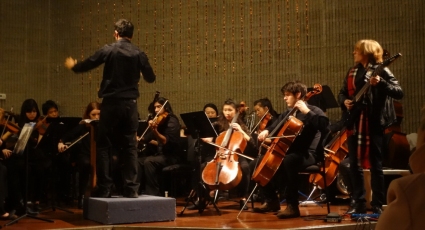
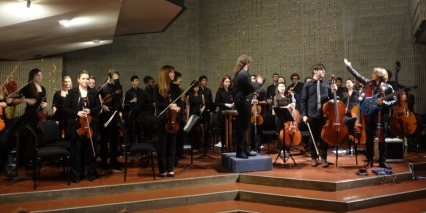
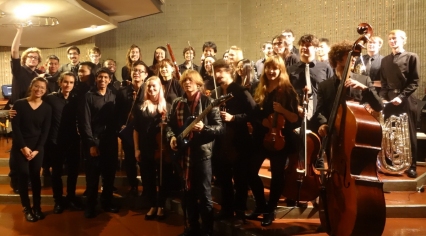
I was there, it was fantastic!
LikeLiked by 1 person